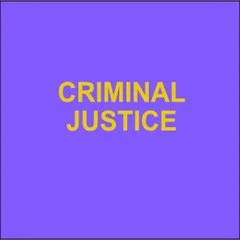By Matthew Clair & Amanda Woog
This Essay theorizes and reimagines the place of courts in the contemporary struggle for the abolition of racialized punitive systems of legal control and exploitation. In the spring and summer of 2020, the killings of George Floyd, Breonna Taylor, and many other Black and Indigenous people sparked continuous protests against racist police violence and other forms of oppression. Meanwhile, abolitionist organizers and scholars have long critiqued the prison-industrial complex, or the constellation of corporations, media entities, governmental actors, and racist and capitalist ideologies that have driven mass incarceration. But between the police and the prison cell sits the criminal court. Criminal courts are the legal pathway from an arrest to a prison sentence—with myriad systems of control in between, including ones branded as “off-ramps”—and we cannot understand the present crisis without understanding how the criminal courts not only function to legitimate police and funnel people into carceral spaces but also contribute unique forms of violence, social control, and exploitation all their own, revealing the machinations of mass criminalization and injustice operating between the police encounter and the prison cell. Our central argument is that courts—with a focus here on the criminal trial courts and the workgroup of actors within them—function as an unjust social institution; we should therefore work toward abolishing criminal courts and replacing them with other institutions that do not inherently legitimate police, rely on jails and prisons, or themselves operate as tools of racial and economic oppression. Drawing on legal scholarship and empirical social scientific research, Part I describes injustices perpetrated by criminal courts, detailing their role in the present crisis of mass criminalization through legal doctrine, racialized social control and violence, and economic exploitation. In Part II, we describe the contemporary abolition movement, briefly laying out its genesis and three guiding principles we view as typically considered in relation to policing and prisons: (1) power shifting, (2) defunding and reinvesting, and (3) transformation. Part III explores how these principles could operate in relation to the courts, drawing on analysis of existing grassroots efforts as well as offering new possibilities. In the short term, non-reformist reforms could make criminal courts a venue to unmask, and therefore aid in dismantling, police and prisons. Such reforms could complement the broader abolition movement and reduce the churn of people through the system. Ultimately, the goal would be to abolish criminal courts as systems of coercion, violence, and exploitation, and to replace them with other social institutions, such as community-based restorative justice and peacemaking programs while at the same time investing in the robust provision of social, political, and economic resources in marginalized communities.
110 CALIFORNIA LAW REVIEW (Volume 110February 20222022) 45p.


